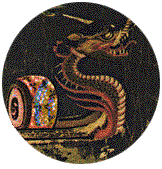Our latest issue, Cascadia: The Life and Breath of the World, just arrived from the printer. Hundreds of hours went into the editing and production of this landmark publication. The flyer on the left lists all the contributors and provides bibliographical and purchasing information.
Looking at the F&G (folded-and-gathered) set, I feel overwhelmed by memories and sensations of all the work that went into Cascadia. Trying to describe the process of making this book would require yet another book to contain all there is to say. Here are just some of the things we did.
Cascadia is 240 pages long, which roughly translates to 400 pages of manuscript, each page of which is edited, proofread, and styled (our term for applying our template styles). These steps alone can take over three months, especially when we are working with many authors and the pieces are fairly complicated. We also produce galleys so that authors can review and approve our editing and see how their pieces have been styled in our word-processing program.
Note that these steps don't include the intensive process of acquisition, during which the editors negotiate the inclusion of each work. Sometimes, they need to obtain copyright permission from publishers or representatives of the estates of authors who have died. Both copyright laws and standard practices make this a complicated process, involving tact and diligence in equal measure.
The interior art consists of sketches by Emily Carr, and we obtained permission to use these from the Royal British Columbia Museum. Acquiring permission went fairly smoothly, as did obtaining the digital images. Laying out the pages and styling the captions were slow, deliberate processes. For example, most of the full-page images have shoulder captions on the facing pages, and these had to be carefully sized and placed so that they wouldn't disturb the design and balance of the spreads.
Book composition requires that the total number of pages be a multiple of eight (that being the number of pages in a signature). If the number of pages falls short, content must be added. We had to add four pages to Cascadia.
Page-makeup rules are many and fairly complicated; I'll just list a few:
- no page may have fewer than five lines of text;
- the first line of a paragraph may fall at the foot of a page, unless it follows a subhead or extract;
- the last line of a paragraph must have at least five characters;
- paragraph endings that occur on the first line of a page (widow) are not permissible, even if the widow runs the full width of the type page;
- the number of consecutive end-of-line hyphens cannot be more than three.
Elsewhere on this blog, I've talked about the use of multiple typefaces. Late in the production process, a note about the back cover was added, and this made the typesetting even more difficult. And always, of course, we were running up against that one element that obeys no maker of books, however skilled and well intentioned: Time.
Through special arrangements with the University of the Fraser Valley and a few contributors, copies will be going to First Nations' communities. In Cascadia: The Life and Breath of the World, they and other readers will find poems, songs, recipes, reading lists, admonitions, praise, stories, and much else from this extraordinary region.

